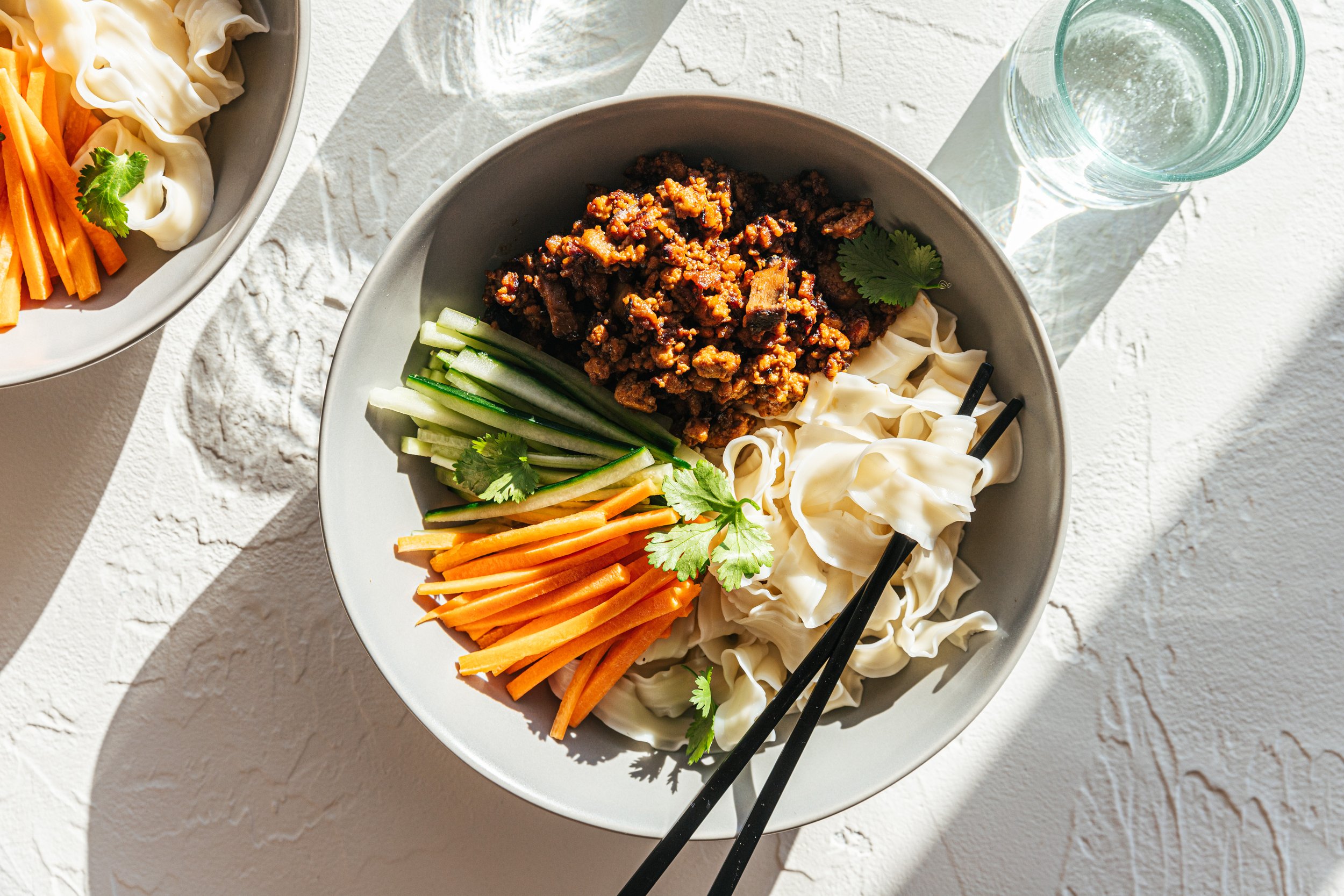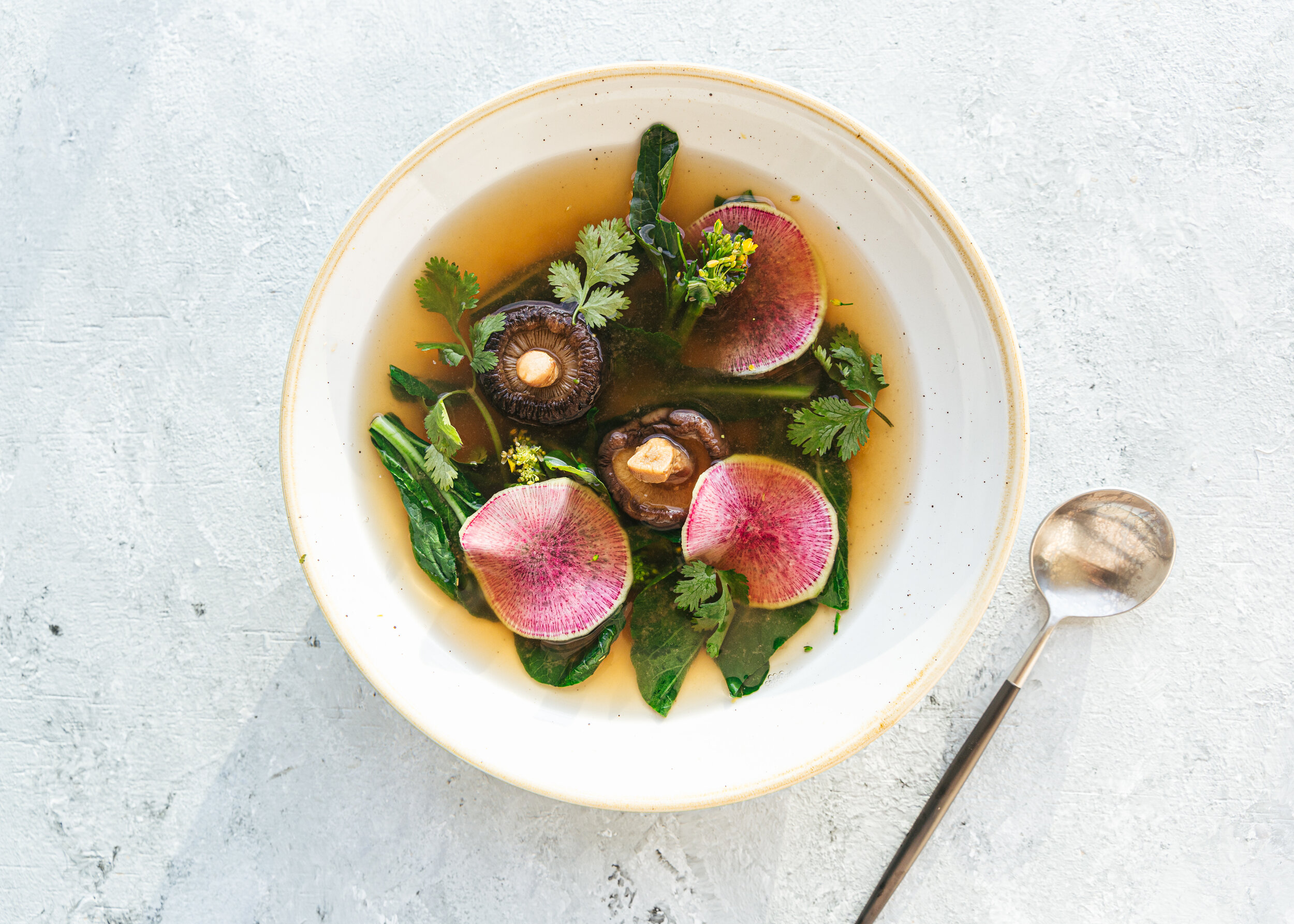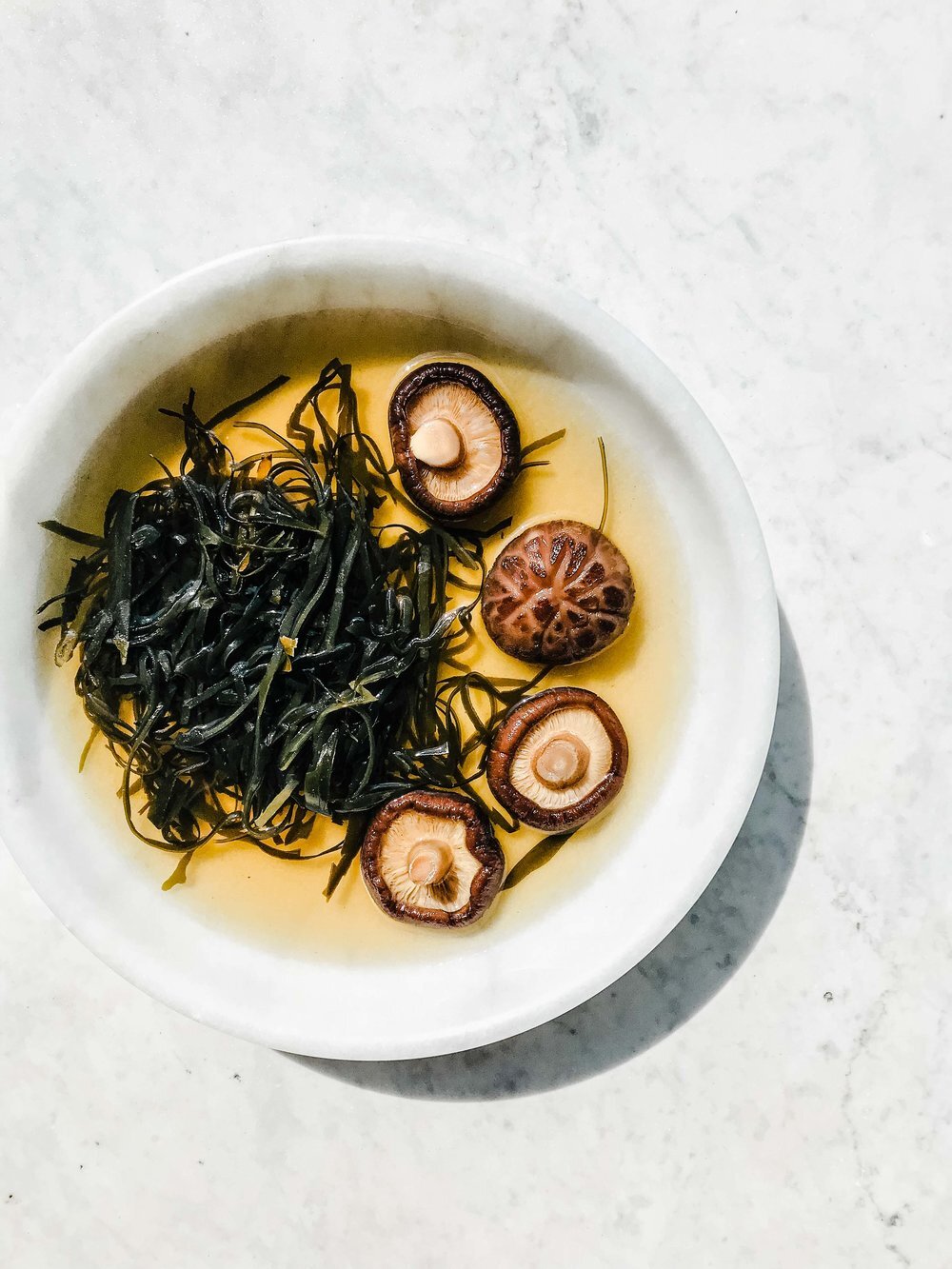I love these vegan black bean noodles. Known as Zha Jiang Mian (炸醬麵) in China or Taiwan and even Korea. These are great for summer when the heat is too intense for soups. Traditionally, Zha Jiang Mian is made with pork. I love this vegan version made with tofu — you really don’t miss the meat here! I’ve made it for western friends and they all love the black bean sauce.
If you’re new to bean sauces, they come in spicy, sweet, and salty variations. It can be intimidating but also forgiving if you buy the wrong kind. Just adjust the seasoning to taste. The brands I used for this recipe is pictured below.
Black bean paste, sweet bean paste and my favourite knife cut noodles.
Vegan Black Bean Zha-Jiang Noodles (炸醬麵)
Serves 2-3
Ingredients
Sauce
2 tablespoons salty bean paste (or Soybean Paste / Dou ban Jiang豆瓣醬)*
6 tablespoons of sweet bean paste (Tian Mian Jiang 甜麵醬)
½ cup Shaoxing wine, rice wine, or sherry
1 tablespoon sugar
1.5 cup (120 grams) chopped mushrooms (I use white button or king oyster mushrooms)
1 package (285 grams) of firm tofu, patted dry and crumbled into pieces
Fragrant Oil *
½ cup oil
1 onion cut into 8 wedges
1 green onion, chopped coarsely
Other Ingredients
Noodles of choice*
Shredded cucumber and carrot
Chopped cilantro or green onions (optional)
Instructions
Place all the bean pastes in a large mixing bowl, add the Shaoxing wine, and mix until well combined. Set aside.
Using a large non-stick pan, add ½ cup of oil, the chopped onion, and green onion. Cook over medium-low heat until the onions turn brown and crispy, around 8-10 minutes. Use a slotted spoon to discard or save the onions for other dishes.
In the same pan, add the crumbled tofu and fry until golden brown. stirring continuously. Add in the mushrooms, and cook until softened and aromatic.
Stir in the bean sauce and turn the heat to low. Stirring constantly until the sauce evaporates into a chunky mixture. Adjust with sugar or salt to taste.
Cook noodles as directed and set aside.
To serve, spoon sauce over noodles and top with shredded cucumber, carrot, green onions, or cilantro (optional). Serve warm.
Cooking notes:
• If you’re new to bean sauces, they come in spicy, sweet, and salty variations. It can be intimidating but also forgiving if you buy the wrong kind. Just adjust the seasoning to taste.
• The black bean paste is very salty! Go easy on it if it’s your first time cooking with it.
• Substitute the fragrant oil with different flavored oils like shallot oil.
• I like to double the portions for leftovers. The sauce is very good served with summer vegetables over a salad.









